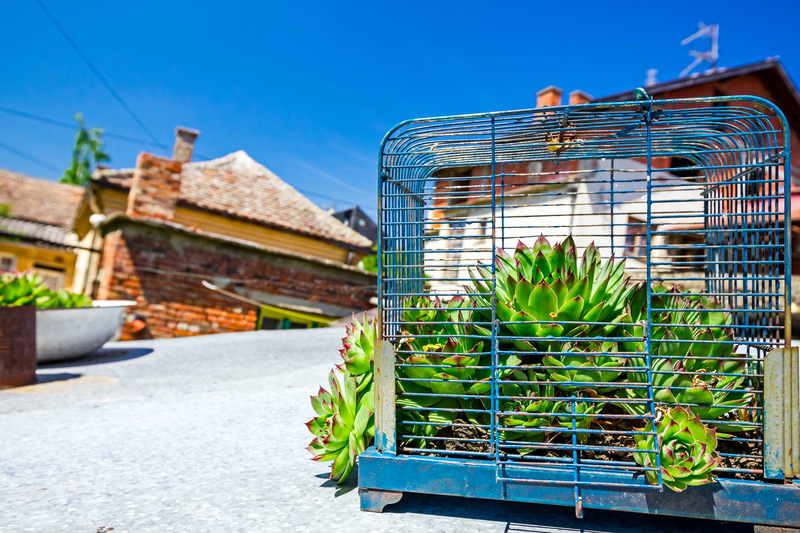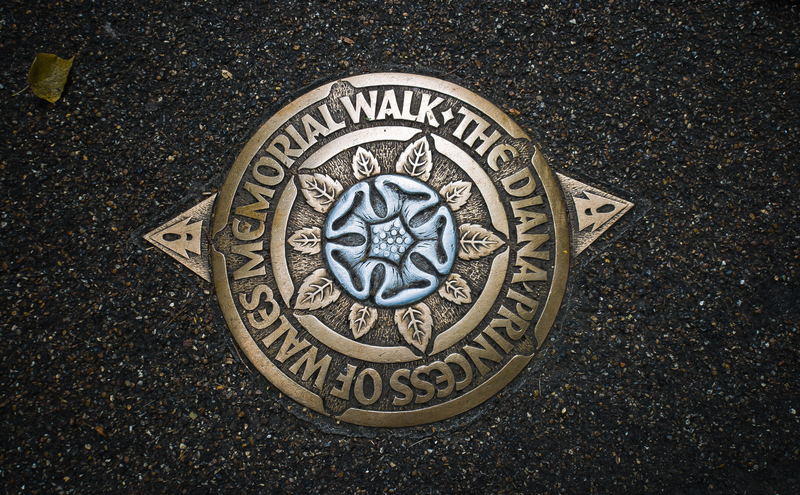Container Gardening: A Pathway to Green Spaces
Posted on 21/06/2025
Container Gardening: A Pathway to Green Spaces
Container gardening has dramatically transformed the way urban dwellers and nature enthusiasts interact with the environment. By using containers to grow flowers, herbs, vegetables, and even small trees, one can create vibrant green spaces anywhere--be it on balconies, rooftops, patios, or even indoors. This comprehensive guide will explore the immense possibilities of container gardening, its benefits, various techniques, and provide practical tips to help you begin your own lush oasis.
What is Container Gardening?
Container gardening, often referred to as potted gardening or planter gardening, is the practice of cultivating plants exclusively in containers instead of the ground. These containers can range from traditional clay pots and decorative ceramic vessels to recycled buckets, old wheelbarrows, and even wooden crates.
- Portable gardens for small and large spaces
- Allows for year-round gardening, regardless of climate
- Accessible for beginners and seasoned gardeners alike
- Offers unique opportunities for creative designs and plant arrangements
Whether you have a sprawling backyard or a tiny apartment balcony, container gardens make lush green spaces accessible to everyone, providing a beautiful and healthy environment--no matter where you live.

Why Choose Container Gardening?
There are myriad benefits associated with container gardening, making it an ideal pathway to greener spaces in urban and suburban locations. Here are some compelling reasons to get started:
1. Maximizing Small Spaces
If you're lacking in-ground planting areas, planters allow you to create green spaces on balconies, patios, porches, and windowsills. This flexibility makes it easy to introduce nature into even the most built-up environments.
2. Mobility and Adaptability
Unlike traditional gardens, containers can be easily moved to optimize sunlight exposure or to protect sensitive plants from extreme weather. This is especially beneficial for renters who move often but still want a thriving garden.
3. Improved Soil and Pest Control
By using high-quality potting mixes, gardeners can avoid problems with poor soil, weeds, and soil-borne pests. You can tailor the soil and drainage according to the specific needs of each plant, resulting in healthier plants and higher yields.
4. Accessibility
For those with physical limitations, container gardens can be raised to a comfortable height, reducing the need to bend or kneel. This makes gardening achievable for people of all ages and abilities.
5. Aesthetic Appeal and Creativity
With so many container styles and plant choices, the potential for creativity is limitless. Experiment with color combinations, shapes, and arrangements to tailor your green space to your own unique style.
Getting Started: Choosing the Right Containers
One of the first steps in building a successful container garden is selecting the appropriate pots or planters. Here are some considerations:
- Material: Choose from terracotta, ceramic, plastic, fiberglass, wood, or metal. Consider local weather, as some materials retain heat or cold better than others.
- Size: Larger containers retain moisture longer and allow for root growth, but ensure they fit your space and can be moved if needed.
- Drainage: Drainage holes are essential to prevent waterlogging and root rot. If your container doesn't have holes, drill some at the bottom.
- Style: Match containers with your decor for a harmonious look, or mix-and-match for an eclectic garden vibe.
Remember, success in container gardening often starts with the right vessel.
Selecting Plants for Your Container Garden
When selecting plants, consider the following factors for a flourishing potted garden:
Light Requirements
Assess how much sunlight your chosen spot receives. Pick plants that match the available light conditions--full sun, partial shade, or full shade.
Growth Habits
Combine plants with different growing habits, such as:
- Thrillers: Tall, eye-catching plants like canna lilies or dracaena for height and drama.
- Fillers: Bushy, medium-height plants like coleus or geraniums to fill in gaps.
- Spillers: Trailing plants like ivy, sweet potato vine, or petunias to cascade over the edge.
This thriller, filler, spiller technique creates a visually stunning and balanced display.
Edibles vs. Ornamentals
Decide whether you want an edible container garden (herbs, vegetables, fruits) or an ornamental oasis (flowers, decorative foliage). You can also blend edibles and ornamentals for maximum visual and functional impact.
Climate Adaptability
Choose plant varieties suited to your local climate. Local nurseries can provide advice on the best performers for your area, and many plants are now bred specifically for resilience in container environments.
Soil and Fertilization for Container Gardens
The right growing medium is critical for the health and vigor of your container plants.
- Use a high-quality potting mix: Never use garden soil; it's too heavy for containers and may harbor diseases.
- Add compost or slow-release fertilizer: Boosts nutrients and promotes strong growth.
- Check moisture retention: Many mixes have added materials like perlite or vermiculite to help retain or drain water as needed.
Regularly fertilize your container garden. Container plants can deplete soil nutrients quickly, so a balanced, water-soluble fertilizer every few weeks will keep them thriving and productive.
Watering Your Container Garden
Proper watering is perhaps the most important aspect of container gardening.
- Check soil moisture daily: Container plants typically need more frequent watering than ground-grown plants due to quicker evaporation.
- Water deeply until it drains: Ensure water reaches the roots, but empty saucers to prevent soggy conditions.
- Use mulch: A layer of organic mulch helps to retain moisture and reduce temperature fluctuations.
- Consider self-watering containers: These are especially useful for busy gardeners or during hot summers.
Remember, over-watering can be just as harmful as under-watering. Always feel the soil before adding more water.
Design Tips for a Beautiful Container Garden
Designing your green container space is a journey that allows you to blend creativity with horticultural knowledge. Here are some creative pointers:
Play with Height and Texture
Combine tall, spiky plants with compact, bushy fillers and trailing species. Use contrasting leaf shapes and colors for visual interest.
Color Combos
Create drama with bold color pairings, or establish a peaceful retreat using soft, harmonious tones.
Groupings and Layers
Group containers in odd numbers and vary height for a more natural appearance. Consider layering smaller planters in front of taller ones for depth.
Seasonal Rotation
Swap out plants according to season, ensuring year-round greenery and blooms. Cool-season pansies and ornamental cabbages can replace summer annuals for an autumn show.
Accessorize
Add decorative stones, whimsical stakes, or solar lights to personalize your mini-garden.
Common Challenges and Solutions
While container gardening simplifies many aspects of plant care, some challenges may arise. Here's how to address common issues:
- Pest infestations: Isolate affected pots and use natural insecticidal soaps. Keep containers clean.
- Root-bound plants: Watch for roots growing out of drainage holes. Repot into a bigger container when necessary.
- Over-fertilizing: Excessive fertilizer can burn plants; stick to recommended dosages and flush soil with water periodically.
- Wilting: Can be due to dry soil, root rot, or excessive heat. Assess conditions and adjust watering or move containers to a cooler spot.
- Lack of flowers/fruit: Ensure plants receive enough sunlight, water, and nutrients. Some may need pollination, so encourage pollinators with flowers.
Eco-Friendly and Sustainable Container Gardening
Embracing sustainable gardening practices contributes to a healthier planet:
- Reuse and recycle: Turn old household items into creative planters.
- Collect rainwater: Use a rain barrel to water your container garden.
- Grow pollinator-friendly plants: Attract bees, butterflies, and other beneficial insects.
- Compost: Boost your potting mix with homemade compost for organic nourishment.
- Choose native plants: They use less water and are better adapted to your local climate.
Inspirational Ideas for Container Gardening
Here are a few creative ways to use container gardening as a pathway to transformative green spaces:
- Vertical gardens: Use stacked pots or wall-mounted planters for compact spaces.
- Miniature fairy gardens: Create enchanting scenes in shallow containers.
- Edible balconies: Grow a mix of herbs, lettuces, cherry tomatoes, and strawberries for a fresh harvest at arm's reach.
- Herb spirals: Spiral arrangements make watering easy and add artistic flair.
- Seasonal window boxes: Swap plantings for seasonal color year-round.
Steps to Start Your Container Garden Today
- Evaluate your space: Check sunlight hours, wind patterns, and available room for containers.
- Select suitable containers: Ensure good drainage and appropriate size.
- Pick your plants: Match species to your sunlight, climate, and personal preferences.
- Prepare your potting mix: Use a high-quality soilless mix and enrich with compost or fertilizer.
- Plant thoughtfully: Combine plants for optimal beauty and growth, using the thriller-filler-spiller method.
- Water and fertilize regularly: Stay attentive to your plants' needs.
- Rotate and swap: Refresh containers with new plants as the seasons change.

Container Gardening as a Step Toward Greener Cities
On a larger scale, container planting is catalyzing a greening movement in towns and cities worldwide. Rooftop farms, balcony gardens, and public parklet planters are improving air quality, supporting urban wildlife, and enhancing mental well-being. Even on a small scale, your container garden weaves a living thread into the larger urban ecosystem, making cities more livable and beautiful.
Conclusion: The Impact of Container Gardening on Green Spaces
Container gardening is a powerful, accessible tool for cultivating green spaces wherever you live. It empowers individuals and communities to reconnect with nature, foster biodiversity, and enjoy the aesthetic and health benefits of plants. By starting your own container garden, you can take a simple yet profound step toward a more sustainable and vibrant world.
Let your exploration of potted planting inspire you to experiment, grow, and share the joys of greenery--one container at a time.

